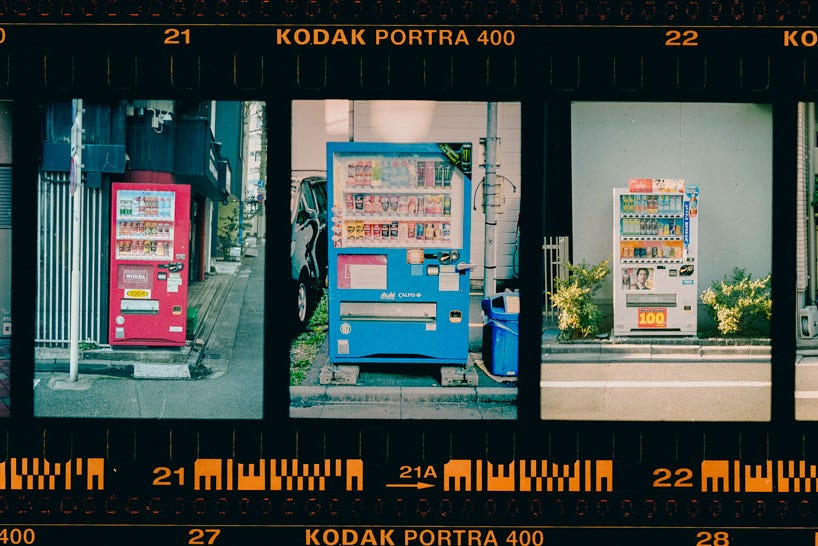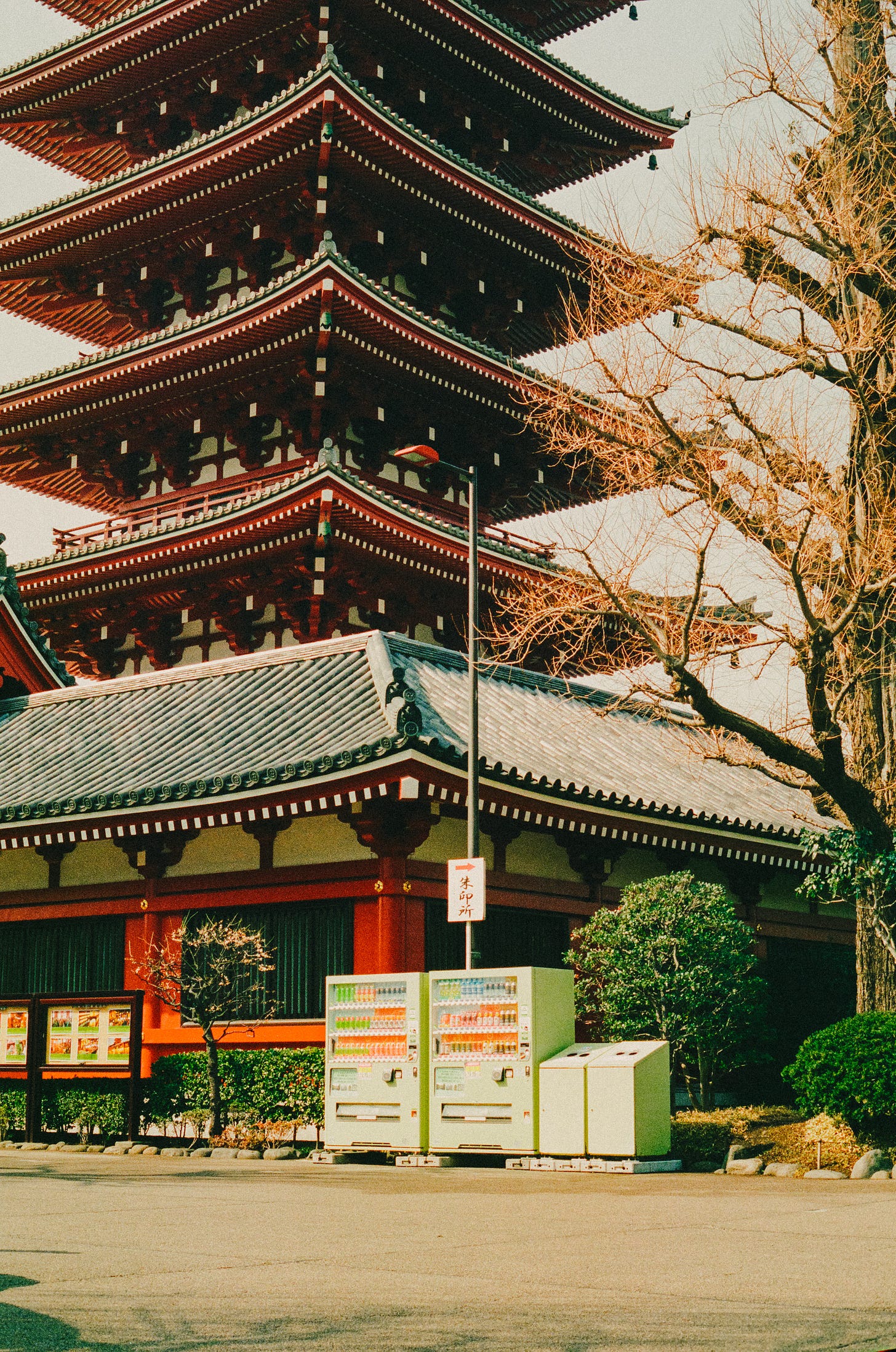One of the things people who've made a book will tell you about making books is that it takes longer than you think it will. This has been true of "THE OBSERVER'S GUIDE TO JAPANESE VENDING MACHINES", which I thought would be printed and (sold through) by the start of summer. One of the consequences of this is that I've been telling people about the book for a long time. These conversations all start the same way:
"I'm actually about to self-publish my first book."
"Oh wow! What's it about?"
"It's mostly photographs but there's some writing in there too but it's all about Japanese vending machines."
From here the interaction can go in two directions depending on who I'm talking to. Down one path, the person gets it. They're excited; they've either been to Japan or are interested in photography and/or books and art in general. They're thrilled to hear that somebody is making something and they want to know more about it.
The other path leads more quickly to the end of the conversation. This person hears "vending machines" and their eyes glaze over slightly; a mechanism in their brain identifies this as an uninteresting conversation. These people tend to respond with one-syllable words like "Oh" or "Hmm" or "Cool" (which is easier and more polite than "boring") and in the background they're considering possible exit strategies. But the more straightforward of this group will respond with, "Why?"
Why Make a Book About Japanese Vending Machines?
The truth is that this wasn't supposed to be a book, it was going to be a zine. I'd heard about Japan's vending machines before the first of two trips I took to the country in 2023 but I didn't realize just how common and diverse they are until I got there. I'd brought an old film camera with me and started taking pictures of them just for fun (I wasn't there for a photography assignment, I was there to run the Tokyo Marathon). I tell this story more fully in the book so I won't duplicate it here but a lot of those photos didn't come out.
So on my second trip (more fun this time, less running) I had a mission: find and photograph enough interesting vending machines for a zine. Something small, maybe 30 pages, that I could use as a project to learn about design and printing and selling before I set out to publish a completely different book (that's still coming, but not for some time).
Frankly, I got carried away. I photographed a lot of vending machines. When I returned home and began editing them, I found that I liked these photographs a lot and to choose just 30 or even 40 of them to print seemed like doing a disservice to the hundreds of others. Getting too attached to your own work can be risky but it can also be a sign that you're onto something. So I made my selects, edited the lot of them, and shelved the entire project for a month. At the end of it, I pulled the collection up on my computer again and found that they were still as interesting to me as they had been. That was good enough for me to consider it a sign, so the decision was made: not a zine, a book.
But Why Vending Machines?
Run a search for "Japanese vending machines" and you'll find loads of articles talking about the "weird" stuff you can buy from them. Cake-in-a-can, a hot bowl of ramen, individually wrapped pieces of fruit, caviar, clothing — the list goes on. More interesting to me is how commonplace the machines are. Because they're well-maintained and very infrequently vandalized, operators can put them everywhere and anywhere. Not just in the millions of recesses of Tokyo and other cities but out in rural spaces too — I found them at remote bus stops, in villages that appeared abandoned, and one high on a mountain where a hiking trail crossed a logging road.
So it wasn't just the sheer variety and quantity of vending machines in Japan that made them an interesting photographic subject, it was this endless contextual variety that in which I encountered them. It would often be the case during my trips that while the tourist hordes were taking pictures of torii gates and temples I'd be off in the corner, photographing a drink machine leaning up against a wall or a tree. The subject of every photograph in the book is a vending machine, but it is also as much what's going on in the periphery. Similarly, the book isn't just about vending machines, it's about Japan through the frame of these machines.
As you can probably guess, none of those "why" conversations lasted long enough to explain all this. And if you're reading this, chances are you aren't one of those people anyhow. When I started thinking about this as a book I knew some would need convincing that this thing should exist, and I was the first one on that list. Seeing the photos was what persuaded me, and I still think that seeing the book will be more effective than any explanation I can give. Still, as with all of the photos inside it, context is important.
In the next issue, I'll get into everything there is to know about the book: page count, how many photos there are, size, materials, all of it. Who knows, maybe I’ll show you the cover…





If I could wave a magic wand, I'd never have to explain why something I'm making should exist lol. sometimes not explanating/justifying it opens the door for that person to see it in a different light, which may be different than your own. Excited to see more.
I'll now be keeping my eyes peeled for interesting vending machines on the trip I'm planning 😅👍
Such a fascinating concept. What was the hardest part of creating your own book?